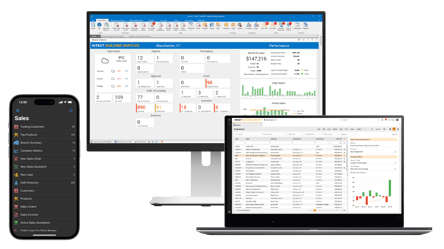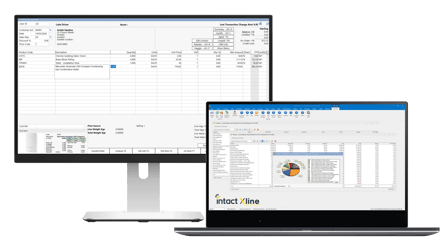In order to streamline your business you must have a well-functioning stock management system. With the right technology and tools available you can then put in place the rules, procedures and policies that will enable you to implement an effective stock management strategy.
We’ve outlined below just some of the ways effective stock management can ease the pressure on time and costs within your business;
Effective Stock Management – Best Practices
1. Too Much Stock
Having too much money tied up in stock can have a negative effect on other parts of your business. If over the course of a few months you buy in wrong e.g take in a number of products that don’t sell, you’ll suddenly find you have less money in the bank and too much money tied up in stock. This can also incur excess storage costs you could probably do without.
To help prevent this you need to be making good buying decisions based on the information available to you within your business management system. When you go to order stock, ensure you have good sales information to hand. How many of a particular product are you selling, how quickly are they moving, how many do you currently hold in stock etc.
2. Stock Outs
While high levels of stock can be unhealthy, carrying too few goods can also be harmful to your business. Running out of fast moving stock can be disastrous on sales. You should be carrying good stock levels based on your minimum stock for the same period last year.
Features like ‘Order Point Calculation’ can be invaluable in helping you to have the correct stock on hand at the right times and avoid ordering Christmas Trees in January!
3. Slow-moving stock
Have you got lots of stock sitting on the shelves for ages? Again, this ties up money that could be better spent elsewhere in your business. Running a report to see how long a product has been on the shelf and how many have been sold since they were bought can be a great help. This will help you uncover slow-moving stock so that you can get them up to the front of your premises and sell them off with a special offer.
4. Replenishment Stock
If a rep comes in the door, how long does it take you to do up an order for him? Does it take you hours to do a buy-in report? If you set your system up right with minimum stock & re-order levels then it can suggest an order for you to review. This saves you having to build the order one product at a time.
5. Stock Takes
Are you closing your warehouse for a few days just to do a stock take? You should be taking advantage of partial stock takes. Not only will a partial stock take reduce the pain of an annual stock take, it will keep you right all through the year.
Rolling stock takes enable you to regularly check your stock levels, give you a snapshot of your stock at any given time and help you identify discrepancies early on.
6. Margin leakage
Have you got reps giving away your margin? Small leaks might seem insignificant at the time but over a period of weeks or months these leakages can seriously impact your profits. To prevent the erosion of your profits going through margin leakage you need to be controlling margin, or at the very least, monitoring the discounts given by staff at the point of sale.
7. Emailing Statements and Invoices
How much time are you spending packing envelopes or emailing invoices? One of the easiest ways to reduce the pressure on your time is to set up your statements and invoices to go out automatically. This will also see a reduction in postage costs. If you have access to the emails of contacts within the accounts department you may even find you get paid quicker!
8. Staff / Sales Analysis
Have you got too many staff on during quiet times? You should be checking how many customers you have in hourly. Proper analysis of this will ensure you are not over-staffed during quiet times or flat out when it’s time to close.
One of our customers realised very early on that between 8am and 9am he had very few customers in but at 5.00pm there was a big rush of customers trying to get served before they closed. What did he do? He stopped opening so early and opened later instead.
9. Missed opportunities
Are you missing out on opportunities to up-sell or cross sell related products at the point of sale? A bit of time spent on setting up ‘related products’ within your system will ensure your sales reps get a prompt when associated products can be sold.
10. Credit Control
Is there money sitting out there that you haven’t collected? Are you monitoring your debtors days, your aged debt or debtors days per client? Do you keep a record of reasons for non-payment or the issuing of credit notes? Any good credit control software should enable you to do this and can significant impact your cashflow.
To give you some idea of the cost savings you could make, we’ve drawn up a quick example:
Hardware Store – €5m turnover – manages to achieve the following:
- Reduce Stock Holding by €20,000
- Reduce Aged Debt by €30,000
- Improve margin by 1% – €50,000
- Increase sales by 2% by up-selling and no “stock outs” = €100k extra sales; Margin 20% – €20,000
The result: €120,000 extra in the bank!





